Last Updated on January 17, 2024 by teamobn
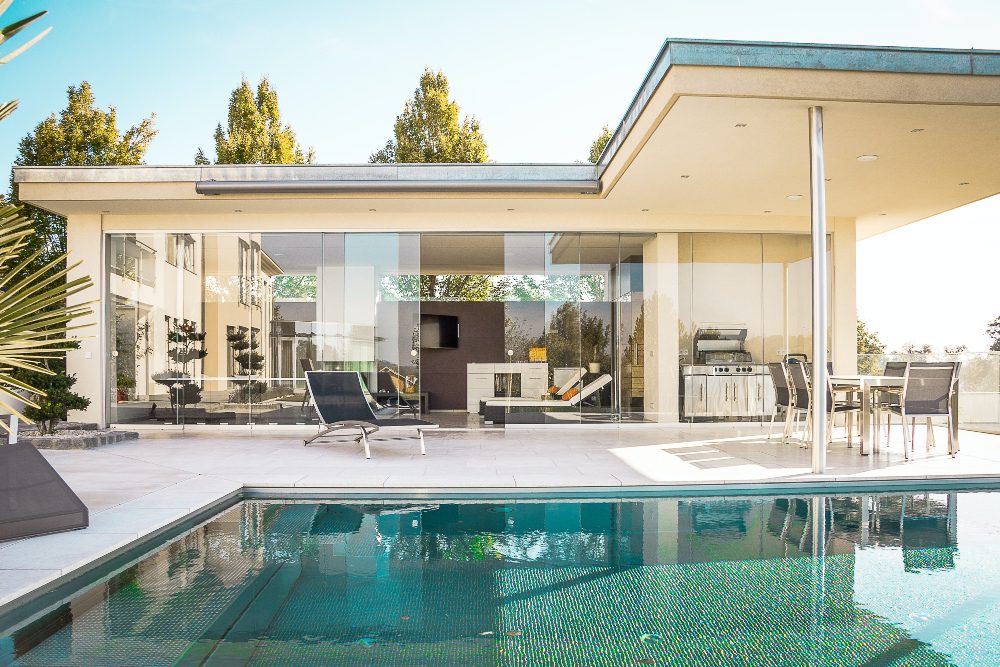
Modern villa design is evolving rapidly to welcome a sustainable lifestyle. Thanks to the advancement in home building, there are many green technologies and eco-friendly designs to create a sustainable house. These advancements can make a safe home for both the family living in it and the surroundings.
This article explores how modern villa design can incorporate sustainable features. Our focus is on creating spaces that are both luxurious and kind to the environment.
Contents
- 1 Understanding Modern Villa Design and Sustainability
- 2 Incorporating Sustainable Features into Modern Villa Design
- 3 What is Next for Modern Villa Design
- 4 FAQs on Sustainable Modern Villa Design
- 4.1 What defines modern villa design?
- 4.2 How are modern villas incorporating sustainability?
- 4.3 Can modern villa design be both luxurious and eco-friendly?
- 4.4 What are some key features of energy efficiency in modern villas?
- 4.5 How do modern villas conserve water?
- 4.6 What is the role of natural light in modern villa design?
- 4.7 Are non-toxic materials important in modern villa construction?
- 4.8 What is biophilic design in the context of modern villas?
- 4.9 How does modern villa design contribute to mental and physical health?
- 4.10 What does the future hold for modern villa design?
- 5 Conclusion
Understanding Modern Villa Design and Sustainability
Modern villa design is not just an architectural concept. It’s a reflection of one’s lifestyle and values. This section explores the integration of sustainability into modern villa design, emphasizing the balance between luxury and environmental responsibility.
The Essence of Sustainable Modern Villa Design
In modern villa design, sustainability is more than a buzzword. The design is essentially about a safe living space for both the family and the environment. This approach involves using renewable resources, minimizing waste, and reducing the carbon footprint. Modern villa design now prioritizes these sustainable practices, showcasing how luxury and eco-friendliness can coexist.
Architectural Trends and Eco-Friendly Living
The trend in modern villa design is shifting significantly towards sustainability. Architects and designers are focusing on innovative ways to reduce environmental impact. This includes the use of energy-efficient systems, sustainable building materials, and designs that maximize natural light and ventilation. Modern villas are becoming living examples of how high-end design can contribute positively to the environment.
Incorporating Sustainable Features into Modern Villa Design
In making your villa sustainable, there are five important aspects of a green living space to consider. Below is how you can create a green modern villa design.
Energy Efficiency in Modern Villa Design
Energy efficiency is a cornerstone of modern villa design. This section highlights how integrating smart, eco-friendly solutions can significantly reduce a villa’s energy footprint while maintaining its luxury and comfort.
Using Renewable Energy
Sustainable energy sources like solar and geothermal are an important aspect of a modern villa design. Renewable energy can lower a home’s carbon footprint and the owner’s electric bills. This section delves deeper into how modern villas utilize renewable energy for a sustainable lifestyle.
Solar panels are a staple in modern villa design. They convert sunlight into electricity, providing a clean and sustainable power source. Villas often have roof-mounted or integrated solar panels that blend seamlessly with the architecture. Some modern villas take it further by installing solar tiles, which serve as roofing material and energy generators. These systems can power everything from lighting to heating, significantly reducing the villa’s carbon footprint.
In areas with consistent wind patterns, modern villas are incorporating small-scale wind turbines. They are particularly effective in coastal or rural settings, where wind flow is abundant. When combined with solar power, wind energy can provide a reliable, year-round energy solution for modern villas.
Geothermal energy is another sustainable option in modern villa design, particularly in regions with volcanic activity or hot springs. This system uses the earth’s natural heat to heat, cool, and hot water. Pipes buried underground circulate a fluid that absorbs the earth’s heat and transfers it to the villa. In the summer, the system reverses, extracting heat from the villa and dissipating it into the ground. This not only reduces energy consumption but also maintains a comfortable indoor climate year-round.
Incorporating renewable energy in modern villa design is not just about immediate benefits. These energy sources drastically reduce reliance on fossil fuels, cutting down greenhouse gas emissions. Furthermore, they offer significant cost savings over time, as homeowners save on energy bills. Modern villas with renewable energy systems often have higher resale values, reflecting the growing demand for sustainable living solutions.
Smart Technology for Enhanced Efficiency
Modern villa design increasingly incorporates smart technology to enhance energy efficiency. This section explores how these innovative systems contribute to a sustainable and intelligent living environment.
Automated systems are central to energy efficiency in modern villas. These systems control lighting, heating, and cooling, adjusting them for optimal energy use. For instance, smart sensors detect when a room is unoccupied, automatically turning off lights or adjusting the HVAC system. This reduces energy waste, ensuring that electricity is used only when necessary.
Smart thermostats are a game-changer in modern villa design. They learn homeowners’ preferences and schedules, adjusting the indoor temperature accordingly. On a chilly morning, the thermostat can warm the house before the residents wake up. When no one is home, it lowers the heating to conserve energy. These devices can be controlled remotely via smartphones, offering convenience and efficiency.
Modern villas often feature automated blinds and adaptive lighting systems. These blinds adjust themselves based on the time of day and the amount of natural light available. During peak sunlight hours, they can close to keep the house cool, reducing the need for air conditioning. Adaptive lighting systems work similarly, dimming or brightening based on natural light levels. This not only conserves energy but also creates a pleasant and comfortable living environment.
Smart technology in modern villas often integrates with renewable energy sources like solar panels. This integration allows for efficient energy management. Excess energy generated by solar panels can be stored in batteries or used to power the villa during peak hours. Smart systems can also sell surplus energy back to the grid, offering an additional benefit to eco-conscious homeowners.
The ultimate goal of smart technology in modern villa design is to enhance both comfort and efficiency. Homeowners enjoy a high level of convenience and personalization, while also contributing to a sustainable future. Smart homes are not just about cutting-edge technology; they represent a thoughtful approach to energy use and environmental responsibility.
Optimizing Energy Consumption
In modern villa design, every detail plays a role in optimizing energy consumption. This section discusses how design elements and technologies contribute to making these homes more energy-efficient and environmentally friendly.
Insulation is a critical component in modern villa design for energy conservation. Advanced insulation techniques involve using materials that keep the indoor climate stable. Double-glazed windows are a popular choice. They consist of two layers of glass with an insulating space in between, reducing heat loss in winter and heat gain in summer. Insulated walls and roofing systems follow a similar principle. They use high-quality materials that prevent thermal bridging and air leaks, maintaining a comfortable indoor temperature with minimal energy usage.
Beyond double-glazing, modern villas often feature windows and doors designed for maximum energy efficiency. These may include triple-glazed windows or thermally broken frames that further reduce heat transfer. Some designs also incorporate coatings or tints on windows that reflect sunlight, keeping homes cooler in warmer climates.
Modern villas are typically equipped with energy-efficient appliances. These appliances, including refrigerators, dishwashers, and washing machines, are designed to perform their tasks using the least amount of energy possible. They often come with energy-saving settings that further reduce their impact on the environment.
LED lighting is another standard feature in modern villas. LEDs are highly efficient compared to traditional incandescent bulbs, using a fraction of the energy and lasting much longer. They are available in a range of colors and brightness levels, allowing homeowners to create the desired ambiance while being energy-conscious.
Many modern villas incorporate smart sensors and timers to control lighting, heating, and cooling systems. These devices ensure that energy is used only when needed. For example, motion sensors can turn off lights in unoccupied rooms, and timers can be set to control heating and cooling systems based on the household’s daily schedule.
The architectural design of modern villas also plays a significant role in energy optimization. Features like overhangs, shaded areas, and strategic placement of windows and doors can naturally regulate the temperature inside the villa. This reduces the reliance on artificial heating and cooling, further conserving energy.
Energy efficiency is integral to modern villa design. By combining renewable energy, smart technology, and efficient design elements, modern villas achieve a balance of luxury and sustainability. These features not only benefit the environment but also offer long-term cost savings for homeowners.
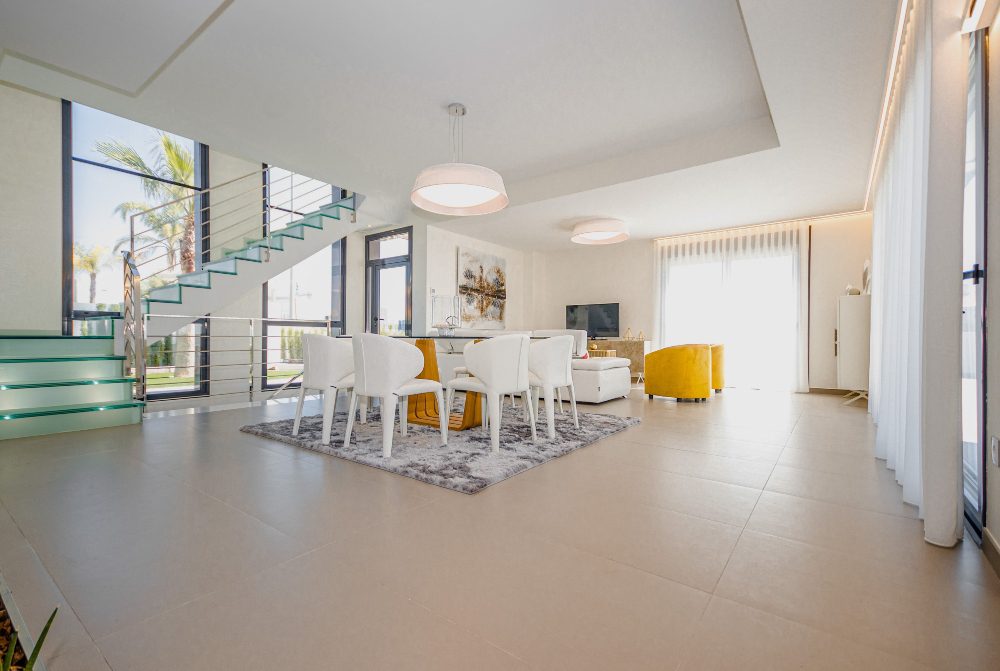
Sustainable Building Materials
In modern villa design, every detail plays a role in optimizing energy consumption. This section discusses how design elements and technologies contribute to making these homes more energy-efficient and environmentally friendly.
Advanced Insulation Techniques
Insulation is a critical component in modern villa design for energy conservation. Advanced insulation techniques involve using materials that keep the indoor climate stable. Double-glazed windows are a popular choice. They consist of two layers of glass with an insulating space in between, reducing heat loss in winter and heat gain in summer.
Insulated walls and roofing systems follow a similar principle. They use high-quality materials that prevent thermal bridging and air leaks, maintaining a comfortable indoor temperature with minimal energy usage.
Energy-Efficient Windows and Doors
Beyond double-glazing, modern villas often feature windows and doors designed for maximum energy efficiency. These may include triple-glazed windows or thermally broken frames that further reduce heat transfer. Some designs also incorporate coatings or tints on windows that reflect sunlight, keeping homes cooler in warmer climates.
Triple-glazed windows are becoming more common in modern villa design. These windows have three layers of glass, each separated by an air or inert gas-filled space. This structure significantly reduces heat transfer, keeping the villa warmer in winter and cooler in summer. It also provides excellent sound insulation, creating a quieter indoor environment.
Thermally broken frames are another innovation in modern villas. These frames have a barrier between the inside and outside metal, which prevents heat transfer through the frame. This is especially important in extreme climates, where metal frames can conduct unwanted heat or cold into the home.
Energy-Efficient Appliances and Lighting
Modern villas are typically equipped with energy-efficient appliances. These appliances, including refrigerators, dishwashers, and washing machines, are designed to perform their tasks using the least amount of energy possible. They often come with energy-saving settings that further reduce their impact on the environment.
LED lighting is another standard feature in modern villas. LEDs are highly efficient compared to traditional incandescent bulbs, using a fraction of the energy and lasting much longer. They are available in a range of colors and brightness levels, allowing homeowners to create the desired ambiance while being energy-conscious.
Use of Smart Sensors and Timers
Many modern villas incorporate smart sensors and timers to control lighting, heating, and cooling systems. These devices ensure that energy is used only when needed. For example, motion sensors can turn off lights in unoccupied rooms, and timers can be set to control heating and cooling systems based on the household’s daily schedule.
Motion sensors are widely used to control lighting in modern villas. They detect movement and turn lights on or off accordingly, ensuring that lights are not left on unnecessarily. This not only saves energy but also extends the life of lighting fixtures.
Timers on heating, ventilation, and air conditioning (HVAC) systems allow for precise control over the villa’s climate. Homeowners can set these timers to adjust the indoor temperature according to their daily routines, ensuring comfort while minimizing energy usage.
Sustainable Architecture for Natural Climate Control
The architectural design of modern villas also plays a significant role in energy optimization. Features like overhangs, shaded areas, and strategic placement of windows and doors can naturally regulate the temperature inside the villa. This reduces the reliance on artificial heating and cooling, further conserving energy.
The placement of windows and doors is carefully considered in modern villa design. They are positioned to maximize natural ventilation and light, reducing the need for artificial lighting and air conditioning. This strategic placement also takes into account the sun’s path and wind patterns to optimize natural heating and cooling.
Overhangs and shaded areas are essential in sustainable villa architecture. These features provide shade during the hottest parts of the day, reducing heat gain and keeping the indoor environment cooler. They also protect the villa from the elements, extending the lifespan of the building materials.
Water Conservation Strategies
Water conservation is a crucial aspect of sustainable living in modern villa design. This section explores various strategies employed to reduce water usage and enhance efficiency.
Innovative Water Management Systems
Modern villas are adopting advanced water management systems. These systems collect and reuse rainwater for irrigation and other non-potable uses. Greywater systems are also becoming popular. They recycle water from showers and sinks for use in gardens or toilet flushing. This reduces the overall water consumption of the villa.
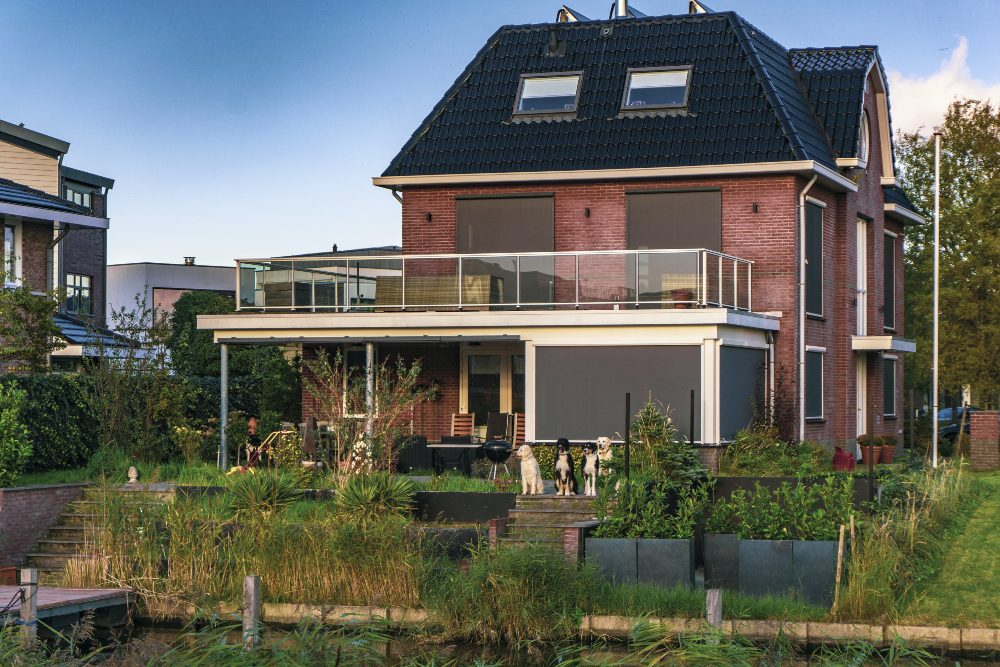
Drought-Resistant Landscaping
Landscaping in modern villas focuses on sustainability. Drought-resistant plants are chosen for gardens to minimize water usage. These plants require less watering and maintenance, making them ideal for eco-friendly landscaping. Additionally, landscaping designs often include permeable paving and native plants that require less water and adapt well to the local climate.
Water-Efficient Appliances and Fixtures
Modern villas are equipped with water-efficient appliances and fixtures. Low-flow toilets, showerheads, and faucets significantly reduce water usage. These fixtures are designed to provide the same functionality while using a fraction of the water that traditional fixtures use. Similarly, energy-efficient dishwashers and washing machines are selected for their low water consumption.
Smart Irrigation Systems
Smart irrigation systems are essential in modern villa landscaping. These systems use sensors to monitor soil moisture and weather conditions, adjusting watering schedules accordingly. This ensures that plants receive the right amount of water at the right time, eliminating wasteful overwatering. Smart irrigation can be controlled remotely, offering convenience and efficiency.
Indoor Air Quality and Natural Light
Maintaining high indoor air quality and maximizing natural light are essential in modern villa design. These elements contribute significantly to the health and well-being of residents while enhancing the energy efficiency of the villa.
Maximizing Natural Light
Modern villa design places a high emphasis on maximizing natural light. This design philosophy is not only about aesthetics but also about creating energy-efficient and healthy living spaces.
In modern villas, large windows and skylights are strategically positioned to flood the interiors with daylight. The orientation and size of these windows are carefully planned to capture maximum sunlight throughout the day. For example, south-facing windows can provide continuous natural light, reducing reliance on artificial lighting.
Mirrors are smartly used in modern villa design to enhance natural light. Placed opposite windows or in darker corners, mirrors can effectively reflect and spread light throughout the room. This not only brightens the space but also creates an illusion of larger, more open interiors.
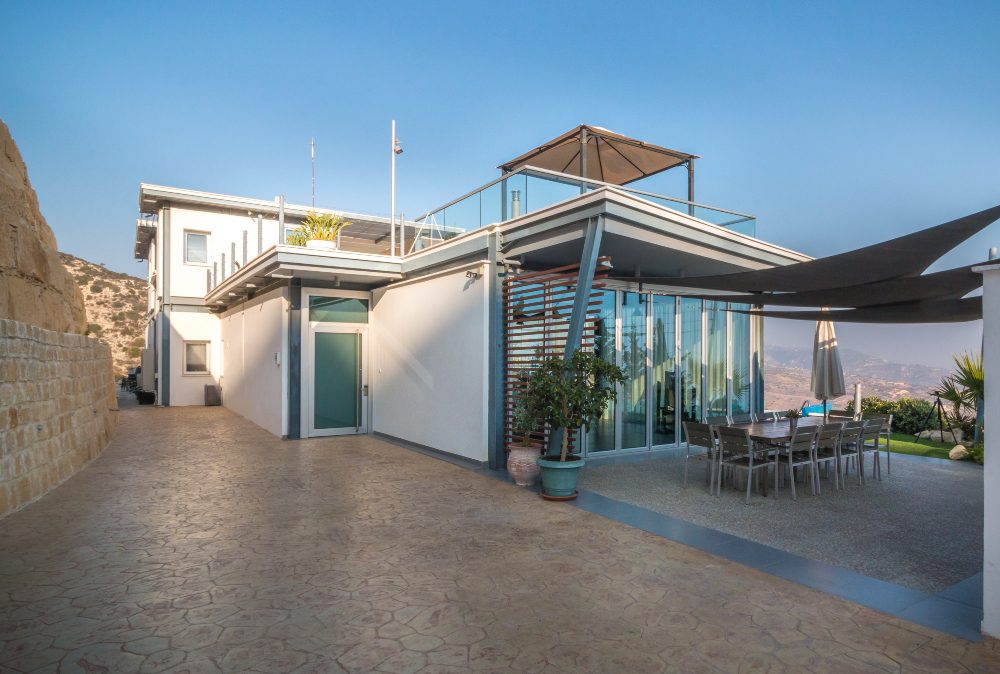
Translucent materials such as frosted glass or light-diffusing curtains are often incorporated in modern villas. These materials allow light to pass through while maintaining privacy, ensuring rooms are well-lit without being exposed.
Maximizing natural light in modern villa design leads to significant energy savings by reducing the need for artificial lighting. Moreover, exposure to natural light is beneficial for mental and physical health, enhancing mood and productivity.
Utilizing Non-Toxic Materials
The selection of materials in modern villa construction plays a vital role in ensuring indoor air quality. Non-toxic materials are a cornerstone of this sustainable approach.
Low-VOC paints, adhesives, and finishes are increasingly used in modern villa design. These products release fewer volatile organic compounds, leading to healthier indoor air. This is particularly important in sealed environments where air circulation may be limited.
Eco-friendly insulation materials and wall coverings are also integral to modern villa design. Materials like natural wool insulation or non-toxic wall paints contribute to a toxin-free indoor environment. This is especially beneficial for individuals with allergies or sensitivities.
Flooring in modern villas often comprises sustainable, non-toxic materials such as bamboo, cork, or reclaimed wood. These materials do not emit harmful chemicals and are durable and eco-friendly, aligning with the principles of modern villa design.
Enhancing Ventilation
Proper ventilation is key to maintaining indoor air quality in modern villas. Architectural designs often include features that promote cross-ventilation, such as operable windows and ventilation shafts. Advanced HVAC systems with air filtration units can also purify indoor air, removing pollutants and allergens.
Incorporating Plants for Air Purification
Plants act as natural air filters. They absorb pollutants like benzene, formaldehyde, and trichloroethylene, common in indoor environments. Popular choices for air purification include spider plants, peace lilies, and Boston ferns. These plants are not only effective at cleaning the air but are also easy to maintain, making them ideal for modern living spaces.
Apart from filtering harmful compounds, indoor plants help maintain optimal indoor humidity levels. They release moisture through a process called transpiration, which can be beneficial in dry indoor environments. Plants also reduce dust levels by trapping dust particles on their surfaces, further improving indoor air quality.
The presence of plants in living spaces has been linked to reduced stress levels and improved mood. They create a calming and relaxing environment, which is beneficial for mental health. This aspect is especially important in the fast-paced lifestyle associated with modern living.
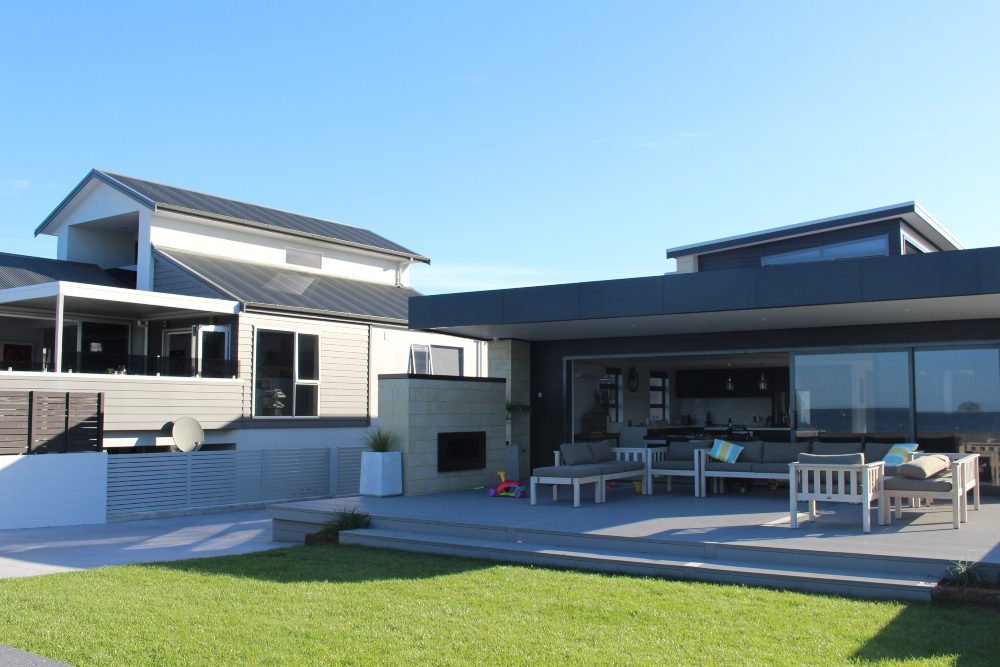
Biophilic Design Elements
Biophilic design, which incorporates natural elements into the living space, is gaining popularity in modern villas. It not only improves air quality but also enhances the connection to nature, contributing to the residents’ overall well-being.
Large windows, glass walls, and skylights are often used in modern villas to establish a visual connection with the outdoor environment. This not only maximizes natural light but also provides calming views of nature, which can be rejuvenating for the residents
Biophilic design also involves creating spaces that mimic the patterns and complexity of nature. This can mean varying ceiling heights, integrating natural shapes and forms into the design, and using color palettes that reflect the natural world. Such design elements contribute to a more dynamic and stimulating living environment.
What is Next for Modern Villa Design
Over the years, innovation in home construction has seen an exciting future in sustainable modern villa design. As we look forward, several trends and advancements stand out, promising to redefine what modern villa design means.
Emerging Trends in Modern Villa Design
Smart features are a rising trend in newer homes where family members have more control over the lighting, temperature, water, and other aspects of their living space. Future villas are expected to be even more interconnected, with advanced systems for managing everything from energy use to security and entertainment. The integration of AI and IoT (Internet of Things) in modern villas will allow for unprecedented levels of customization and convenience.
Sustainability as a Standard
Sustainability is set to become a standard in modern villa design rather than an option. The rising demand for green architectural features is due to its energy efficiency and safety. There is also the aspect of energy efficiency that can cut down monthly costs when living in a modern villa. Future modern villas will likely incorporate even more advanced green technologies, such as energy-generating glass and more efficient water recycling systems.
Adaptive and Dynamic Architecture
The architecture of modern villas is evolving to be more adaptive and dynamic. With the advancement in materials and building technologies, villas of the future could adjust to changing weather conditions, and occupant needs, or even transform their layouts. This flexibility will not only enhance comfort and functionality but also ensure that the villas remain sustainable and energy-efficient over time.
Focus on Health and Well-being
Health and well-being will continue to be a major focus in modern villa design. This includes enhanced features for indoor air quality, natural light, and the incorporation of biophilic elements. The design of future villas will prioritize spaces that promote physical and mental well-being, with dedicated areas for relaxation, exercise, and connecting with nature.
Integration with the Surrounding Environment
Future modern villas will likely exhibit a deeper integration with their surrounding environment. This means designs that not only blend in with the landscape but also contribute positively to the local ecosystem. The use of native plants, natural water features, and landscaping that supports local wildlife will be common.
The Role in Shaping Future Lifestyles
Modern villa design is not just about creating luxurious homes; it’s about shaping lifestyles. Future villas will embody a lifestyle that is environmentally responsible, technologically advanced, and deeply connected to nature. This holistic approach will set new standards for luxury living, making modern villas not just homes, but havens for sustainable and advanced living.
FAQs on Sustainable Modern Villa Design
What defines modern villa design?
Modern villa design is characterized by sleek, contemporary architecture, open spaces, and the integration of technology and sustainability. It focuses on creating luxurious yet eco-friendly living environments.
How are modern villas incorporating sustainability?
Sustainability in modern villas is achieved through renewable energy sources like solar panels, sustainable building materials, water conservation systems, and smart technology for energy efficiency.
Can modern villa design be both luxurious and eco-friendly?
Absolutely. Modern villa design seamlessly blends luxury with eco-friendliness, using advanced technologies and sustainable practices to create comfortable and opulent living spaces that are also kind to the environment.
What are some key features of energy efficiency in modern villas?
Key features include solar energy systems, energy-efficient appliances, smart home technologies, and design elements like double-glazing windows and insulated walls that help maintain indoor temperatures.
How do modern villas conserve water?
Water conservation in modern villas is achieved through systems like rainwater harvesting, greywater recycling, drought-resistant landscaping, and water-efficient fixtures.
What is the role of natural light in modern villa design?
Maximizing natural light is a crucial aspect of modern villa design. It involves using large windows, skylights, and strategic placements to illuminate interiors naturally, reducing the need for artificial lighting.
Are non-toxic materials important in modern villa construction?
Modern villas often use low-VOC paints and finishes, and eco-friendly insulation materials to ensure a healthier indoor environment. These material improves the air quality within the space and do not contain any toxins that can hurt the surroundings.
What is biophilic design in the context of modern villas?
When we talk about biophilic aspects, we are referring to adding “living” components to a modern villa design like plants and natural materials. Other “living” furnishing also includes water elements such as outdoor ponds or an aquarium.
How does modern villa design contribute to mental and physical health?
Various aspects of a modern villa design contribute to overall health such as purifying the air within a living space and allowing natural lighting into the interiors. In addition, sustainable aspects of the design improve mental health like allowing natural sunlight indoors.
What does the future hold for modern villa design?
The future of modern villa design is likely to see more advanced sustainable technologies, smarter home automation, and designs that further blend luxury with environmental responsibility.
Conclusion
Modern villa design is at the forefront of combining luxury with sustainability. The design shows advancement in interior design to maximize lighting, space, and health while lowering a home’s carbon footprint. As we move forward, modern villa design continues to evolve, promising homes that are not just places to live but symbols of a harmonious, sustainable lifestyle.








